Buildings
About
In Florida, we don't always need a full garage to protect our vehicles. We prefer to keep our cars out of the sun and rain, but since we don't deal with snow, walls are nice, but not required. Therefore, many homes built after the 1920s, when cars became commonplace, have integral carports as part of the design in Florida, even when they also have a detached garage.

Mission style residence designed with an integral carport built in the 1920s.

Bungalow with integral carport built in the 1920s with a detached garage to the rear.

Historic detached carport for a bungalow. This one has storage built in along the side.
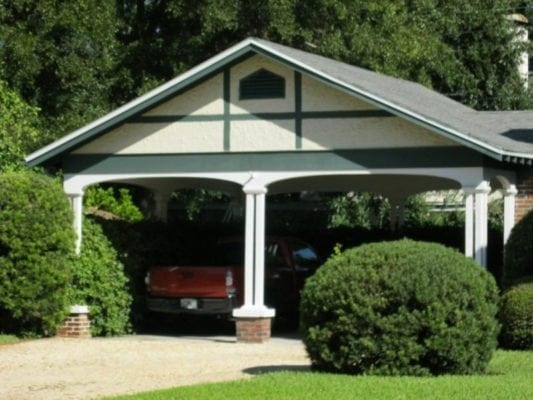
Detached carport at a Tudor style home in Tampa.
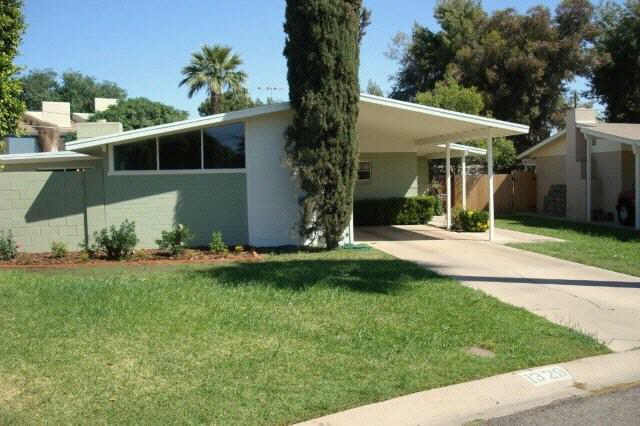
Integral carport on a Mid Century Modern home
Other Florida homes have a detached carport design that is easy to add to any historic home property. These designs date from the 1880s through today, with elements from Craftsman Bungalows, Colonial Revival, and Mid-Century Modern all used to make unique and useful structures.
Detached simple gable car port for a bungalow found in Tampa.
Detached car port with triple columns for a Minimal Traditional home located in Tampa.
Historic Shed can custom design a detached car port to complement your historic home to protect your car and enhance your yard. Each design can incorporate details from the main house, using traditional materials and design elements that will look right at home at your historic property. These structures can double as entertainment pavilions as well for special occasions.
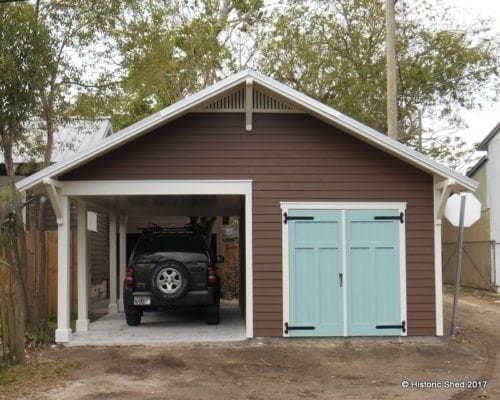
Carport designed and built by Historic Shed in St. Augustine.
Some various carport/ storage options that may work for you:
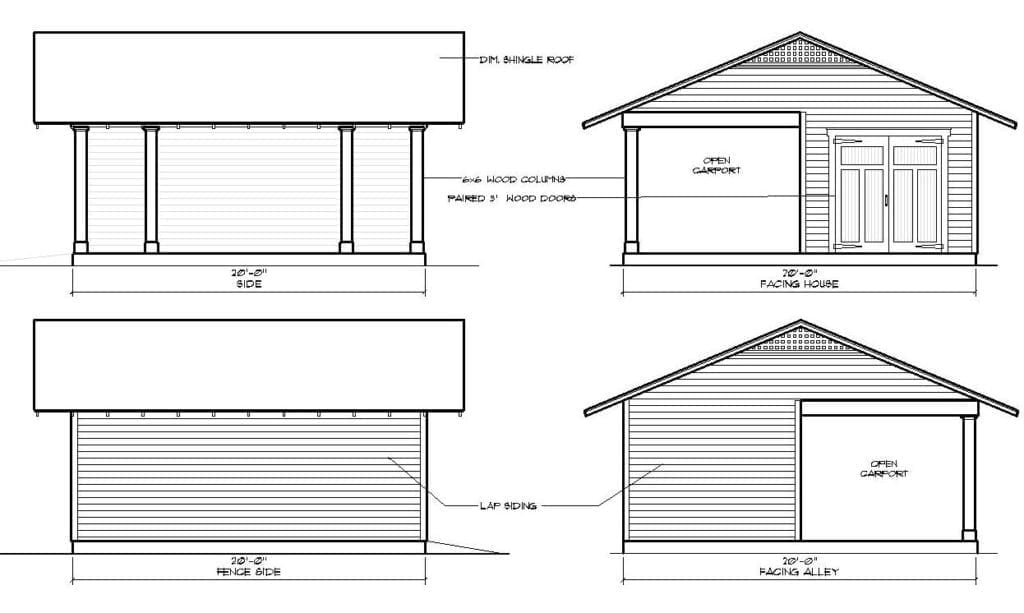
Front gable single car carport with side storage
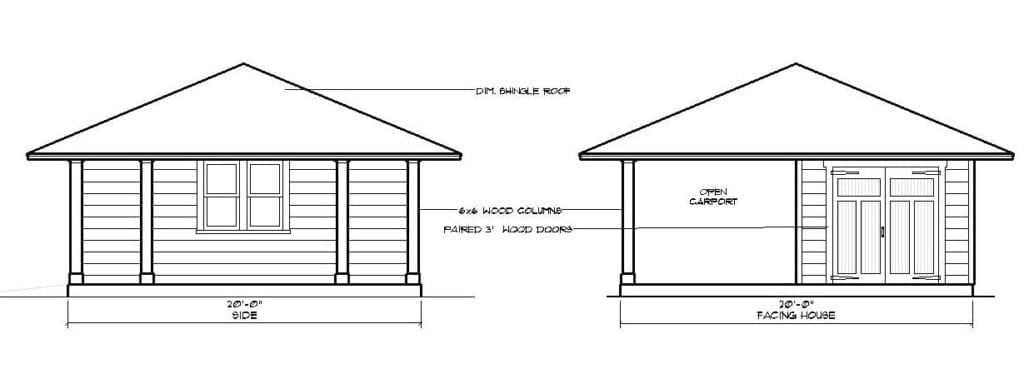
Hipped roof single car carport with side storage
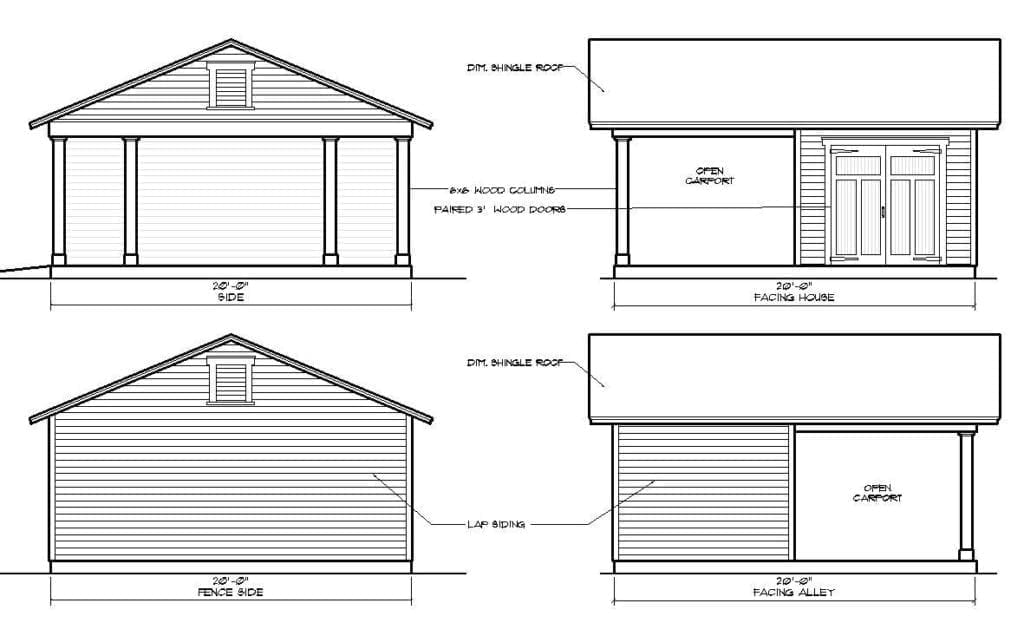
Side Gable single car carport with side storage
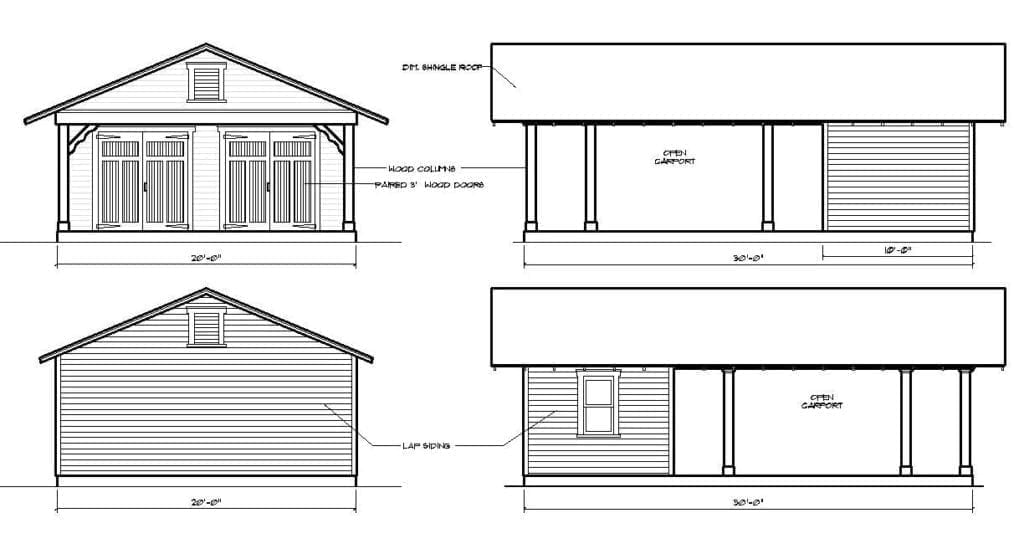
Gable two-car carport with storage to the rear
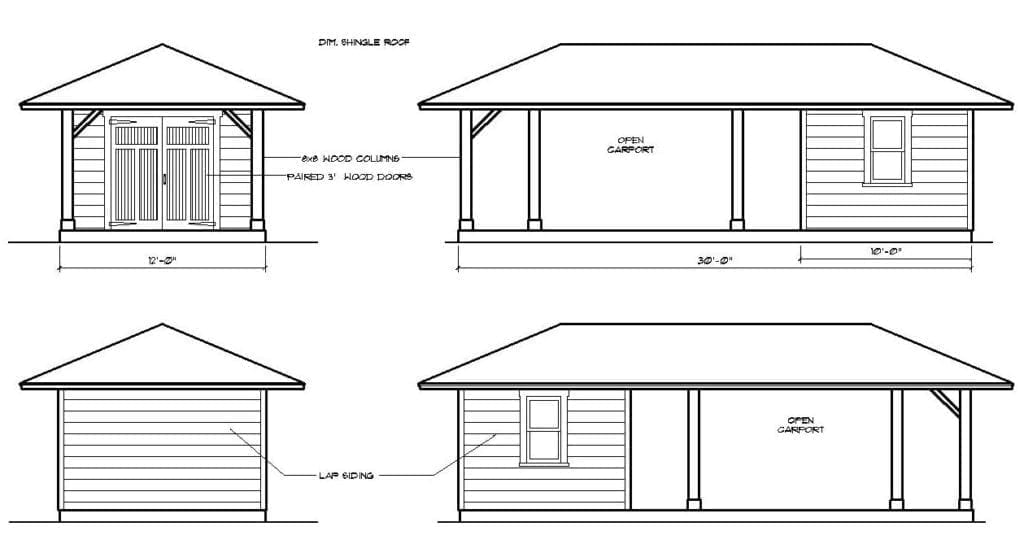
Hipped roof single car carport with storage to the rear
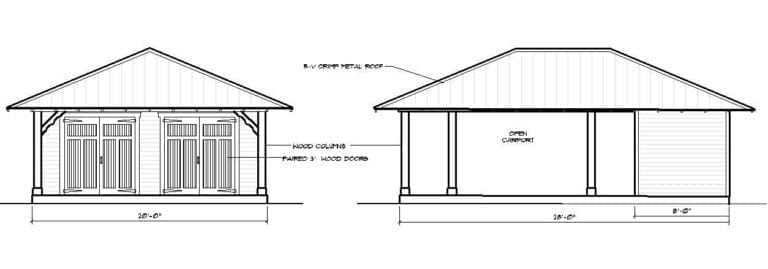
Hipped roof two-car carport with storage to the rear
We have a lot of people in love with our shed designs, but because we use high-end materials, they don't always fit into everyone's budget. So, we've spent some serious time discussing how we can create a more economical design without compromising the charm, detailing and longevity of our product. A shed with faux board and batten siding was one of our design solutions, using pressure treated plywood to simulate the board siding and then applying cypress battens for a finished look. This would reduce both material and labor costs, but when detailed properly, still looks appropriate behind historic homes.
 Board and batten is a traditional historic siding that originated in Norway and Sweden. It was popularized in the United States by Andrew Jackson Downing in the mid 1800s in his picturesque residential designs. The siding was commonly used in Florida for outbuildings, including barns and garages, making it an appropriate material for use on sheds in historic districts. (See a Florida property built in the 1880s with board and batten outbuildings and the shed we built to complement it.)
Board and batten is a traditional historic siding that originated in Norway and Sweden. It was popularized in the United States by Andrew Jackson Downing in the mid 1800s in his picturesque residential designs. The siding was commonly used in Florida for outbuildings, including barns and garages, making it an appropriate material for use on sheds in historic districts. (See a Florida property built in the 1880s with board and batten outbuildings and the shed we built to complement it.)
We'd been discussing building a prototype of the board and batten economy shed for a while, but hadn't managed to find the time. Then we were contacted by a Clearwater couple who wanted an 8'x10' shed that complemented their 1920s bungalow with a stucco exterior. Since they did not need cypress lap siding to match their house, we suggested trying the board and batten shed. They jumped at the chance since the interior of their home features board and batten on their built-in cabinets and as their bath interior finish.

8'x10' Board and Batten Shed
We customized the shed to reflect elements from the main house; we installed a checkerboard gable vent, angle cut the rafter tails, and installed brackets that mimicked the ones on the main house. The end result created a very pleasing shed design that was less expensive to build, yet that maintained historic character and still uses durable materials. We are now pleased to offer the Historic Shed™ Board and Batten Shed line. We think you'll like it.

As attractive as it's useful
While every historic house that we design a shed for is unique, some places have an exceptional story that sets them apart from the rest. This is true of a property settled in the 1880s Florida wilderness where we installed a 12'x14' shed in November that will serve as archives storage. The site is listed on the National Register of Historic Places.
The house is located in what was founded as the the town of Limona in 1876 by Joseph Gillette Knapp, a retired judge from Wisconsin. Knapp actively promoted the area and soon convinced E. E. Pratt of the Illinois-based Elgin Watch Company to settle in Limona and to establish a retirement community for employees. Among the Illinois settlers was a talented watch maker, Charles Scott Moseley, his artist wife Julia Moseley, and their young children. Arriving in 1883, the Moseleys at first moved into a cabin that already existed on the lake-front property, but after a fire in 1885, they built the current house. Designed around a central porch to capture breezes on all sides, the house remains largely unaltered since initial construction. A well, bathhouse, shed and a two-story outbuilding constructed in the 1920s are also located on the site.
 |
| The main house |
 |
| A still-functioning well |
 |
| A storage shed with the bathhouse visible to the right |
 |
| The two-story carport/ studio |
The current owner, a direct descendant of Scott and Julia Moseley, has an extensive collection of letters written by Julia to her husband during his frequent business trips describing life in the Florida wilderness, along with photographs, artwork and other artifacts from early Florida life. The archives shed was designed to store these items in a climate controlled environment as well as provide a work space for visiting scholars. Historic Shed was hired to design and build the shed in a manner that would complement the existing historic site.
Built on tapered concrete piers to match the main house foundation, the shed incorporates cypress board and batten siding, exposed rafter tails, a custom dutch door and gable-end lattice details drawn from the various buildings on the property. Salvaged historic windows for the shed were provided by the owner and still have all their wavy glass panes. The windows are protected by batten shutters which can be fastened during storms to protect the fragile collection. The interior was finished with plywood walls, a pecky cypress ceiling, and cypress flooring. Cypress shelves and a desk constructed out of large cypress planks provided by the owner provide workspace for historians. The shed was insulated with open cell foam and a split mini system air conditioning system provides climate control. The paint scheme was used on the other historic outbuildings originally, using Julia Moseley's favorite colors.
| Wood shake roof |
| Cypress dutch door that mimics one on the main house |
| Batten shutters for storm protection and shading the interior from direct light |
| Salvaged historic wood windows |
| Desk constructed of cypress planks provided by the owner |
| Pecky cypress ceiling with shellac finish |